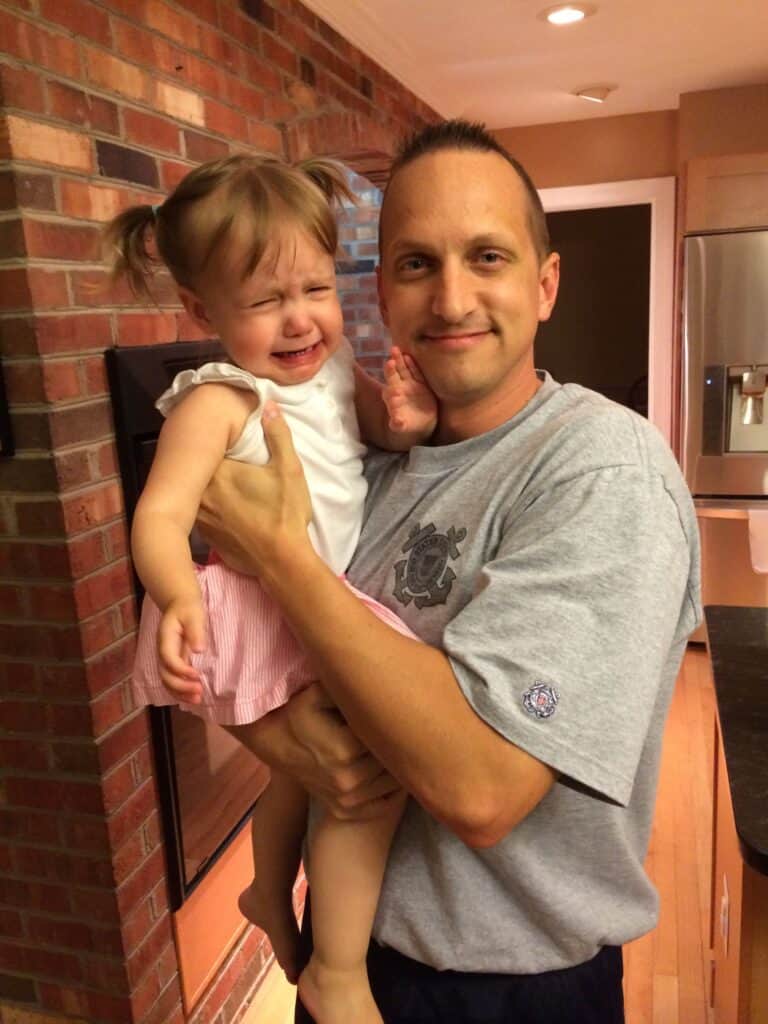Ah, the terrible twos. That magical time in a child’s development when they go from being a cute and cuddly baby to a screaming, tantrum-throwing monster. It’s a time when parents start to question their sanity and wonder if they’ll ever get a good night’s sleep again. So, how long do these terrible twos last, you ask? Well, that’s the million-dollar question, isn’t it?

As a parent who’s been through the terrible twos (and come out the other side mostly unscathed), I can tell you that it’s not a time for the faint of heart. It’s a time when you’ll find yourself negotiating with a tiny tyrant over the color of their socks or the shape of their toast. It’s a time when you’ll find yourself hiding in the bathroom just to get a few minutes of peace. And it’s a time when you’ll wonder why you ever thought having kids was a good idea on earth.
But fear not, dear mama! While the terrible twos can be challenging, they’re also a time of tremendous growth and development for your little one. It’s a time when they’re learning to assert their independence and communicate their needs and wants, even if it’s in the form of an ear-piercing scream.
Let’s take a lighthearted look at the duration of the terrible twos, why they happen, and how you can survive this phase with your sanity intact. Whether you’re a seasoned parent or a newbie, we hope that this article will provide you with some laughs and some helpful tips for getting through this challenging time. So grab a cup of coffee (or a glass of wine), and let’s dive in!
Exactly what are the terrible twos, anyway?
The terrible twos, also known as the toddler years, is a phase of child development characterized by frequent tantrums, mood swings, and defiance. It typically occurs between 18 months and 3 years, although the duration can vary from child to child. This period can be challenging for both children and their parents, but it’s an important part of a child’s journey toward independence and self-discovery.
During the terrible twos, children are learning to assert their independence and communicate their needs and wants. They’re starting to develop their personality and sense of autonomy but haven’t yet developed the skills to express themselves effectively. As a result, they often resort to tantrums, crying, and other forms of emotional outbursts to get their point across.
One of the hallmarks of the terrible twos is a child’s newfound desire to say “no.” They may refuse to do things they used to enjoy or push back against parental authority. This can be frustrating for parents, who may feel like they’re losing control of the situation. However, it’s important to remember that saying “no” is crucial to a child’s development. By asserting their boundaries and expressing their preferences, children are learning to become more confident and independent individuals.
Another common aspect of the terrible twos is a child’s developing language skills.
They may start to speak in short sentences and use simple phrases to express themselves. This can be exciting for parents, who may be eager to hear their child’s first words. However, it can also be challenging, as children may not yet have the vocabulary to express themselves fully.
The terrible twos can be a trying time for both children and their parents. It’s a period of significant change and growth that can be difficult to navigate. Remember that this phase is temporary and a necessary part of a child’s development. With patience, understanding, and a little humor, parents can help their children navigate the terrible twos and emerge on the other side as more confident, capable individuals.
But why does it happen?
Well, the truth is that the terrible twos are a completely normal part of a child’s development. It’s a time when they’re starting to assert their independence and develop their own sense of self. And as any parent knows, that process can be messy, frustrating, and downright exhausting.
During the terrible twos, children are learning to communicate their wants and needs. They’re starting to understand that they’re separate individuals from their parents and caregivers and are eager to assert their independence. However, they haven’t yet developed the skills to express themselves effectively, which can lead to frustration and tantrums.
Another factor that can contribute to the terrible twos is the fact that children’s brains are developing rapidly during this period. They’re learning new skills, creating new connections, and exploring the world around them. But all of that growth can also lead to emotional instability as children struggle to make sense of their rapidly-changing environment.
So, how long do terrible twos last?
Well, that can vary from child to child. Some children may experience the terrible twos for a few months, while others may go through this phase for a year or more. But one thing’s for sure – it’s a completely normal part of a child’s development and will eventually pass.
As a parent, it’s important to remember that the terrible twos do not reflect your parenting skills. It’s a phase that every child goes through, and it’s a sign that your child is growing and developing as they should. So, take a deep breath, remind yourself that this, too, shall pass, and remember that you’re doing the best you can.
Do all kids go through it?
The good news is that not all kids go through the terrible twos – lucky you! But, let’s be real, every kid is unique and will go through different phases as they grow up.
Now, if your little one does hit the terrible twos, don’t worry! It’s not necessarily a bad thing. It just means they’re starting to assert their independence and explore the world around them.
As a parent, your job is to support your kiddo and help them through this challenging time with love and understanding. And if you’re feeling overwhelmed, don’t be afraid to reach out to your pediatrician for guidance.
Remember, there’s no one “right” way to parent – every child is different and needs different things. So, whether your kid goes through the terrible twos or not, approach their development with patience, empathy, and a good sense of humor. And trust me, those tantrums will pass – eventually.
You might also enjoy Need Kids to Stop Whining? Effective Tips for Parents
Are the twos really so terrible?
Absolutely not! Sure, they can be challenging at times, but they’re also filled with some of the most incredible moments you’ll ever have as a parent.
The twos are when your little one starts to develop their personality and their own sense of humor. They’re curious, adventurous, and constantly exploring the world around them. As a parent, it’s amazing to watch your child grow and learn; the twos are a huge part of that journey.
Yes, there may be some tantrums and meltdowns along the way, but they’re all a part of your child’s development. And honestly, some of those tantrums can be pretty hilarious in hindsight. Who knew a two-year-old could get so worked up about not being able to wear their favorite tutu to the grocery store?
But it’s not just the funny moments that make the twos so wonderful. It’s also the snuggles, the giggles, and the milestones that come with this age. Watching your child take their first steps, say their first words, or even learn how to put on their own shoes – these are all moments that will stay with you forever.
So, are the twos really so terrible? No. They’re challenging, sure, but they’re also filled with so much joy and wonder. Embrace this phase of your child’s development with open arms, and don’t forget to enjoy all the little moments along the way. Trust me, before you know it, your little one will be all grown up and you’ll be looking back on these days with fond memories.
Responding to the terrible twos: how to manage
Managing the terrible twos can be a real challenge for any parent. It’s a time when your child is developing their sense of independence, testing boundaries, and exploring the world around them. While it can be frustrating and exhausting at times, there are a few strategies you can use to help manage this phase of your child’s development.
First and foremost, it’s important to remember that the terrible twos are a normal part of your child’s development. This phase will pass, and it’s important to approach it with patience and understanding. One of the most effective strategies for managing the terrible twos is to establish clear boundaries and routines for your child. This can help them feel more secure and in control, which can reduce their anxiety and frustration.
Another key strategy is to redirect your child’s behavior when they’re acting out. Rather than scolding or punishing them, try to redirect their energy and attention to something more positive. For example, if your child is throwing a tantrum because they can’t have a toy they want, try to distract them with a different activity or toy. This can help diffuse the situation and prevent it from escalating further.
It’s also important to give your child plenty of opportunities to express their independence in a safe and controlled way. This can help reduce their frustration and minimize the likelihood of tantrums and meltdowns. For example, you can give your child choices about what they want to wear, what book they want to read, or what snack they want to eat. This can help them feel more in control of their environment and reduce the likelihood of power struggles.
The terrible twos can be exhausting and stressful, so make time for self-care and stress relief.
This can include taking a bubble bath, going for a walk, or taking a few deep breaths when you feel overwhelmed. Remember that taking care of yourself is part of being a good parent.
In summary, managing the terrible twos can be a challenge, but it’s not impossible. Establishing clear boundaries, redirecting your child’s behavior, giving them opportunities to express their independence, and taking care of yourself as a parent can help make this phase of your child’s development a little bit easier to manage. Remember, the terrible twos will pass, and with a bit of patience and understanding, you and your child will come out on the other side stronger and more resilient.

Leave a Reply